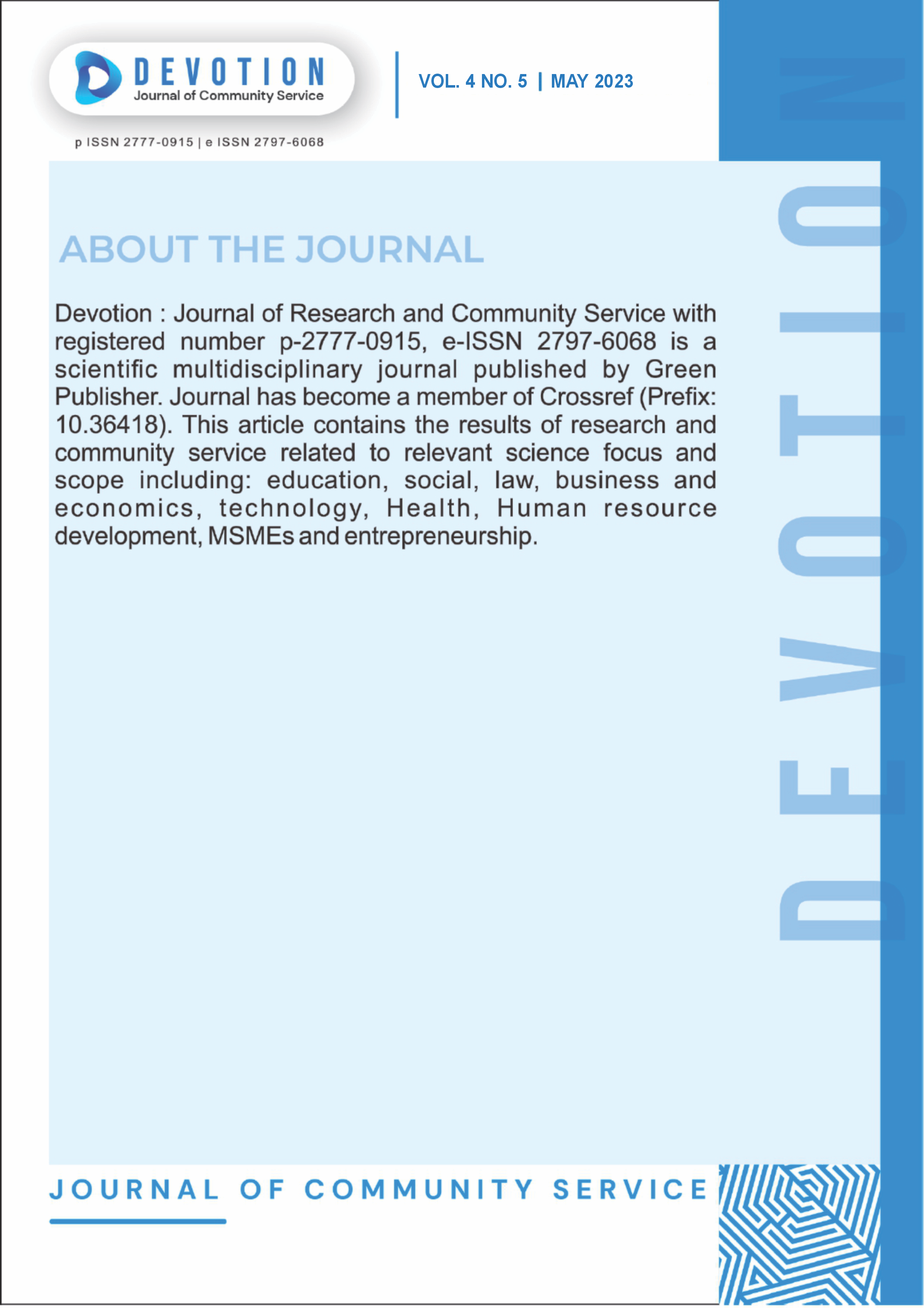Student Character Building Through Hidden Curriculum based on Connectionism Theory
DOI:
https://doi.org/10.59188/devotion.v4i5.465Keywords:
Connectionism theory; hidden curriculum; student characterAbstract
This research aims to analyze the implementation of the hidden curriculum on the character building of students at Bunda Hati Kudus Kota Wisata High School. This research uses Thorndike's theory of connectionism which states that learning is a process of interaction between stimuli (can be feelings, thoughts, or behaviors) and responses (which of course also take the form of feelings, thoughts, and movements). Previous research shows that the hidden curriculum emphasizes the formation and development of character in students and character education is part of the hidden curriculum in the learning process in the school environment which is not written directly in the official school curriculum but has a very large contribution in the process of building the character of students. This research aims to analyze strategies to increase understanding and implement ethics at school, at home, and in the community. The research method used is descriptive qualitative. Data collection techniques in this study used observation and interviews. The results showed that the implementation of the hidden curriculum at Bunda Hati Kudus Kota Wisata High School has had a positive habituation impact on students in order to achieve the school's established mission, namely cultivating the values of integrity, compassion, competence based on the spirituality value.
Published
Issue
Section
License
Copyright (c) 2023 Ewina Efriani Manik

This work is licensed under a Creative Commons Attribution-ShareAlike 4.0 International License.
Authors who publish with this journal agree to the following terms:
- Authors retain copyright and grant the journal right of first publication with the work simultaneously licensed under a Creative Commons Attribution-ShareAlike 4.0 International. that allows others to share the work with an acknowledgement of the work's authorship and initial publication in this journal.
- Authors are able to enter into separate, additional contractual arrangements for the non-exclusive distribution of the journal's published version of the work (e.g., post it to an institutional repository or publish it in a book), with an acknowledgement of its initial publication in this journal.
- Authors are permitted and encouraged to post their work online (e.g., in institutional repositories or on their website) prior to and during the submission process, as it can lead to productive exchanges, as well as earlier and greater citation of published work.













